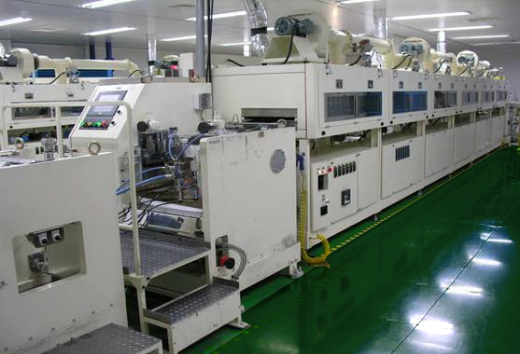Elevating Energy: The Evolution of Lithium Battery Energy Density
In the dynamic landscape of energy storage, the race to enhance lithium battery energy density stands as a beacon of innovation. Energy density, a crucial metric measuring the amount of energy stored per unit volume or mass, has been a focal point in the quest for more efficient and powerful lithium batteries. This article explores the breakthroughs propelling lithium battery energy density to new heights and the transformative implications for industries ranging from electric vehicles to portable electronics.
The Crucial Role of Energy Density in Lithium Batteries
Definition and Significance:
Energy density is the heartbeat of lithium batteries. It dictates how much energy a battery can store relative to its size or weight. The higher the energy density, the more power can be packed into a compact space. This metric is pivotal in determining the performance, range, and longevity of devices powered by lithium batteries, shaping the landscape of modern energy storage.
Driving Forces for Improvement:
The relentless pursuit of higher energy density stems from the increasing demand for more powerful and longer-lasting batteries. Electric vehicles (EVs) crave higher energy density for extended ranges, while portable electronics seek compact yet energy-dense batteries for prolonged usage between charges. The quest for breakthroughs in energy density is fueled by the vision of a future where energy storage is not just efficient but revolutionary.
Evolutionary Stages: Lithium-Ion to the Next Frontier
Lithium-Ion’s Pioneering Role
The era of lithium-ion batteries marked a watershed moment in energy storage. These batteries, with their impressive energy density, became the powerhouse behind portable electronics. The widespread adoption of lithium-ion batteries transformed the way we communicate, compute, and navigate our daily lives.
Incremental Progress
While lithium-ion batteries have served us well, incremental improvements in their energy density have been realized through tweaks in electrode materials, electrolyte formulations, and manufacturing techniques. However, the quest for significant breakthroughs has intensified with the growing demand for electric vehicles and the need for scalable energy storage solutions.
Promising Frontiers: Lithium-Sulfur Chemistry and Solid-State Batteries
Lithium-Sulfur Chemistry
At the forefront of energy density breakthroughs is lithium-sulfur chemistry. Sulfur, abundant and cost-effective, offers a high theoretical energy density. Researchers are overcoming challenges related to sulfur’s stability and the expansion and contraction of the sulfur cathode during charge-discharge cycles. The potential of lithium-sulfur batteries lies in their ability to deliver substantially higher energy densities compared to traditional lithium-ion batteries.
Solid-State Lithium Batteries
Another promising frontier is the realm of solid-state lithium batteries. By replacing liquid electrolytes with solid alternatives, these batteries offer enhanced safety, longer cycle life, and the potential for higher energy density. Innovations in solid-state materials and manufacturing processes aim to usher in a new era of batteries that are not only more energy-dense but also safer and more durable.
Silicon Anodes and Capacity Expansion
Silicon Anodes Unleashed
Traditional graphite anodes are being reimagined through the integration of silicon. Silicon boasts a much higher capacity for lithium ions, enabling batteries to store more energy. Despite challenges related to silicon’s volume expansion during charging and discharging, innovative electrode designs and materials engineering are mitigating these issues. Silicon anodes represent a substantial leap toward achieving higher energy density.
Beyond Lithium: Exploring Exotic Chemistries
The journey towards higher energy density extends beyond the confines of lithium. Lithium-silicon, lithium-air, and other exotic chemistries are under exploration. These endeavors involve rethinking the very fundamentals of battery chemistry and exploring materials that can accommodate more lithium ions per unit volume, pushing the boundaries of energy storage.
Addressing Engineering Challenges for Sustainable Progress
Battling Degradation
persistent challenge in the pursuit of higher energy density is the degradation of battery components over time. Researchers are addressing this challenge through the development of advanced electrolytes, protective coatings for electrodes, and innovative designs that mitigate degradation effects. Sustainable progress requires solutions that balance energy density gains with the longevity of battery components.
Balancing Act
Achieving higher energy density often involves a delicate balancing act. Researchers and engineers are navigating the trade-offs between energy density, safety, and cycle life. This interdisciplinary approach ensures that gains in energy density do not compromise the safety or overall lifespan of batteries, striking a balance crucial for sustainable energy storage solutions.
Transformative Implications Across Industries
Electric Vehicles
The impact of breakthroughs in lithium battery energy density is most palpable in the realm of electric vehicles. Higher energy density translates to extended driving ranges, shorter charging times, and lighter EVs. These advancements are pivotal in accelerating the transition to sustainable transportation and reducing our reliance on traditional fossil fuels.
Portable Electronics
From smartphones to wearables, the consumer electronics landscape is poised for transformation. Devices equipped with batteries boasting higher energy density promise longer usage between charges and lighter, more portable designs. The implications for consumer convenience and the overall user experience are profound.
Navigating Environmental Considerations: A Responsible Approach
Sustainable Energy Storage
As we celebrate advancements in energy density, a responsible approach is essential. Researchers are exploring environmentally friendly materials, recyclable components, and sustainable manufacturing practices. Balancing the pursuit of higher energy density with ecological considerations ensures that energy storage solutions align with global sustainability goals.
Looking Toward the Future: A High-Energy Tomorrow
Integration with Renewables
The future of lithium battery energy density is intertwined with the integration of renewable energy sources. High-capacity batteries play a pivotal role in storing intermittent renewable energy, ensuring a stable and reliable power supply even when sunlight or wind resources fluctuate.
Beyond Batteries: Diversification of Energy Storage
While lithium batteries continue to dominate, the future may witness a diversified portfolio of energy storage solutions. Flow batteries, capacitors, and other innovations are vying for attention, each tailored to specific applications and complementing the strengths of lithium batteries.
結論
The evolution of lithium battery energy density is not merely a technological feat; it’s a journey toward a more powerful and sustainable future. Breakthroughs in lithium battery technology promise to reshape industries, redefine how we use energy, and accelerate the global transition to a cleaner, greener energy landscape. As we stand on the cusp of a high-energy tomorrow, the significance of these breakthroughs cannot be overstated—ushering in an era where energy is not just stored but elevated to new and transformative heights.
-
 The LiFePO4 battery, also known as the lithium iron phosphate battery, is a type of rechargeable battery that has gained popularity in recent years due to its high energy density, long cycle life, and safety features. However, like all batteries, LiFePO4 batteries have a finite lifespan and will eventually need to be replaced. In this article, we will explore the...続きを読む
The LiFePO4 battery, also known as the lithium iron phosphate battery, is a type of rechargeable battery that has gained popularity in recent years due to its high energy density, long cycle life, and safety features. However, like all batteries, LiFePO4 batteries have a finite lifespan and will eventually need to be replaced. In this article, we will explore the...続きを読む -
 Introduction: The demand for high-performance batteries has been on the rise in recent years, driven by the increasing adoption of electric vehicles, energy storage systems, and other portable devices. The lithium iron phosphate (LiFePO4) battery chemistry has gained significant attention due to its superior safety, long cycle life, and high energy density. To ensure optimum performance and extended battery life,...続きを読む
Introduction: The demand for high-performance batteries has been on the rise in recent years, driven by the increasing adoption of electric vehicles, energy storage systems, and other portable devices. The lithium iron phosphate (LiFePO4) battery chemistry has gained significant attention due to its superior safety, long cycle life, and high energy density. To ensure optimum performance and extended battery life,...続きを読む -
 Lithium Iron Phosphate Like other batteries, LiFePO4 batteries are made from electricity-generating electrochemical cells that power electrical devices. A LiFePO4 battery consists of a positive electrode, positive electrode, separator, electrolyte, positive and negative current collectors. The positive terminal of the battery is called the cathode and the negative terminal is called the anode. Anode terminal as Li-ion source. The electrolyte...続きを読む
Lithium Iron Phosphate Like other batteries, LiFePO4 batteries are made from electricity-generating electrochemical cells that power electrical devices. A LiFePO4 battery consists of a positive electrode, positive electrode, separator, electrolyte, positive and negative current collectors. The positive terminal of the battery is called the cathode and the negative terminal is called the anode. Anode terminal as Li-ion source. The electrolyte...続きを読む -
 In recent years, the advent of electric forklifts has revolutionized the way warehouse operations are conducted. These environmentally friendly and cost-effective solutions have proven to be a game-changer in the material handling industry. One of the key components that have contributed to their success is the use of lithium batteries. Lithium batteries have gained popularity in various industries due...続きを読む
In recent years, the advent of electric forklifts has revolutionized the way warehouse operations are conducted. These environmentally friendly and cost-effective solutions have proven to be a game-changer in the material handling industry. One of the key components that have contributed to their success is the use of lithium batteries. Lithium batteries have gained popularity in various industries due...続きを読む -
 In today's world, where technology is advancing at an unprecedented pace, we are seeing a surge in the use of electric and hybrid vehicles. This transition towards more sustainable and environmentally friendly modes of transportation has led to a demand for efficient and reliable on-board battery chargers. In this article, we will be discussing the benefits of a 24V on-board...続きを読む
In today's world, where technology is advancing at an unprecedented pace, we are seeing a surge in the use of electric and hybrid vehicles. This transition towards more sustainable and environmentally friendly modes of transportation has led to a demand for efficient and reliable on-board battery chargers. In this article, we will be discussing the benefits of a 24V on-board...続きを読む -
 A deep cycle battery is a type of battery that is designed to discharge a significant portion of its stored energy capacity before being recharged. Unlike regular batteries, which are commonly used in devices that require short bursts of energy, deep cycle batteries are used in applications that require continuous and long-term power supply. These batteries are used in a...続きを読む
A deep cycle battery is a type of battery that is designed to discharge a significant portion of its stored energy capacity before being recharged. Unlike regular batteries, which are commonly used in devices that require short bursts of energy, deep cycle batteries are used in applications that require continuous and long-term power supply. These batteries are used in a...続きを読む -
 In recent years, there has been a growing interest in electric vehicles (EVs) as an alternative to conventional gasoline-powered cars. One of the key components that make EVs possible is the lithium battery. These batteries, with their high energy density and long-lasting power, have revolutionized the automotive industry and paved the way for a cleaner and more sustainable future. ...続きを読む
In recent years, there has been a growing interest in electric vehicles (EVs) as an alternative to conventional gasoline-powered cars. One of the key components that make EVs possible is the lithium battery. These batteries, with their high energy density and long-lasting power, have revolutionized the automotive industry and paved the way for a cleaner and more sustainable future. ...続きを読む



